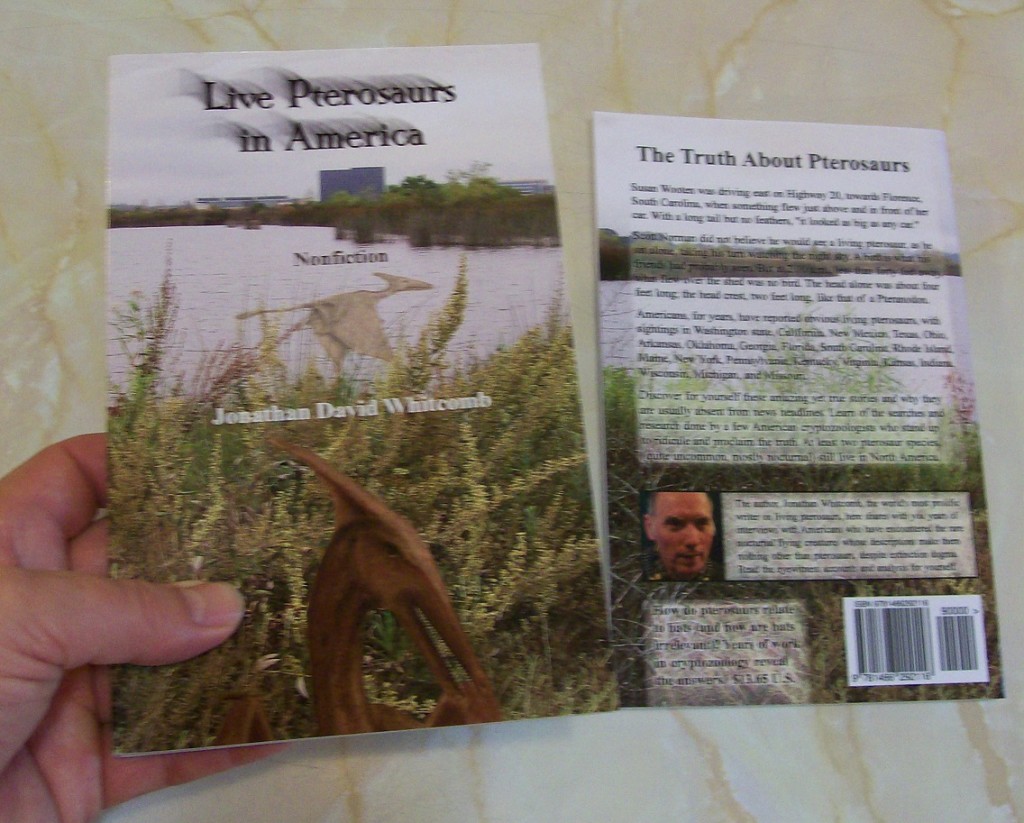Ropens in Western USA
According to Cryptozoology News (online), two eyewitnesses in Nevada recently saw a “reptilian-like bird” fly up and over their vehicle on Interstate-80 at 11:00 p.m., and the description of the flying creature included “long thin tail,” a head crest, and “a long and thin neck.” That sounds like a ropen.
That was a rare sighting report, that apparent pterosaur in Nevada, for the many sightings in the western United States, up until then, were in states like Washington, Oregon, California, Arizona, New Mexico, Utah, and Idaho. Nevada and Colorado had been slighted by those flying creatures, apparently. Now only Colorado seems left out.
I can understand how some readers might think that the ropen flies only in the imagination of a few radical believers, only in the realm of cryptozoology. But most eyewitnesses of apparent pterosaurs in the United States had no interest in cryptids before their sightings. Their belief in the long-tailed featherless ropen ignited the moment they saw the flying creature with their own eyes.
Ropen in California
The following is part of an email I got in mid-December of 2012:
I would like to report seeing a very strange creature flying above. I saw it around 9 a.m. this morning today. It was a giant black bird of some types. I live very close to San Fernando and Fletcher [Los Angeles area] . . . after the rain settled I saw this big black bird figure fly over an electrical post. . . . It was just huge. A big beautiful thing. It had a long tail but it was a different color than what was reported. It was black… I think it was a pterosaur.
Ropen in Oregon
Searching for Ropens and Finding God (4th edition of the nonfiction) says:
In May of 2010, a man and his wife were driving, at mid-day, on the I-84, by the Columbia Gorge in Oregon, when something flew across the highway. The man reported, “It was pretty good size and the thing that really stood out was that it had a long tail and unusually shaped wings, different from a bird because they seemed to be more curved.”
” . . . it was brown and appeared to have no feathers.” After searching online, he concluded that it was a ropen.
Ropen in Washington State
From the book Live Pterosaurs in America (3rd edition) we read:
“I was 15 yrs old [when] I saw two ropens together sitting on a fence. I was riding my bike home from a friend’s house around 5 pm in [a town in southwest Washington state]. I lived in the country with my parents on a . . . ranch.
” . . . on a wood plank fence were two of the biggest bird-like creatures I could ever imagine! I almost crashed my bike! . . .
” . . . the first thing I noticed was their heads, then I thought this can’t be! Could they be dinosaurs? . . .
“[Their] heads [were] . . . maybe 4 ft long with the beak. . . . a brown body color that looked like hair . . . the wings looked like black rubber. . . .”
###
.
Virginia (2015)
West Virginia (2015)
Nicaragua (2009)
Louisiana (2014)
Modern Pterosaurs in North America
The name for this featherless flying creature in North America does not mean it needs to be the same species of pterosaur as the glowing ropen in Papua New Guinea.
[The pterosaur was] grey in color and had a long and thin neck. Its head, says Davis, was also thin and pointy with a long beak. He remembers it had a “crest” on the top of its head.
Ropen, a Still-Living Pterosaur
Although this apparent extant pterosaur on Umboi Island does not seem to be much of a threat to humans, there have been reports, in other areas of Papua New Guinea, of attacks on natives.
Reasons to Believe Eyewitnesses of the Ropen
Not only natives of Umboi Island, Papua New Guinea, have seen the long-tailed ropen but Westerners like the American Duane Hodgkinson and two Australians in Perth.
What is this flying creature called “ropen?” Countless eyewitnesses, in many countries across the planet, have pondered what it was they had seen.
Giant Ropen in Papua New Guinea
Gideon Koro, of Umboi Island, was one of seven boys who encountered the huge ropen one day as it flew over a crater lake: a terrifiying ordeal for Gideon.
The Ropen as a Rhamphorhynchoid
Ropen is the local name of a nocturnal creature on Umboi Island, Papua New Guinea that glows while flying, and which is held by many cryptozoologists as a possible living pterosaur.
So in conclusion, what do I think of the book? It’s not polished, it’s not gripping at least in style (though the accounts are fascinating and Whitcomb makes some clever arguments) and it’s all way beyond my boggle threshold: I’m slightly more inclined to believe in live pterosaurs in the USA now than before I read it . . .
.

Live Pterosaurs in America (third edition) by Whitcomb
From a reader of the previous (second) edition of this nonfiction book:
“I couldn’t put this book down. It is absolutely fascinating to read about eyewitness accounts of the people who have seen these creatures. To learn about these testimonies from such an open minded perspective is refreshing in the extreme! . . . I highly recommend this book to anyone! People should know the truth about what is going on. . . .”
.
 Devon Roberts was interviewed, in 2015, by Jonathan Whitcomb
Devon Roberts was interviewed, in 2015, by Jonathan Whitcomb